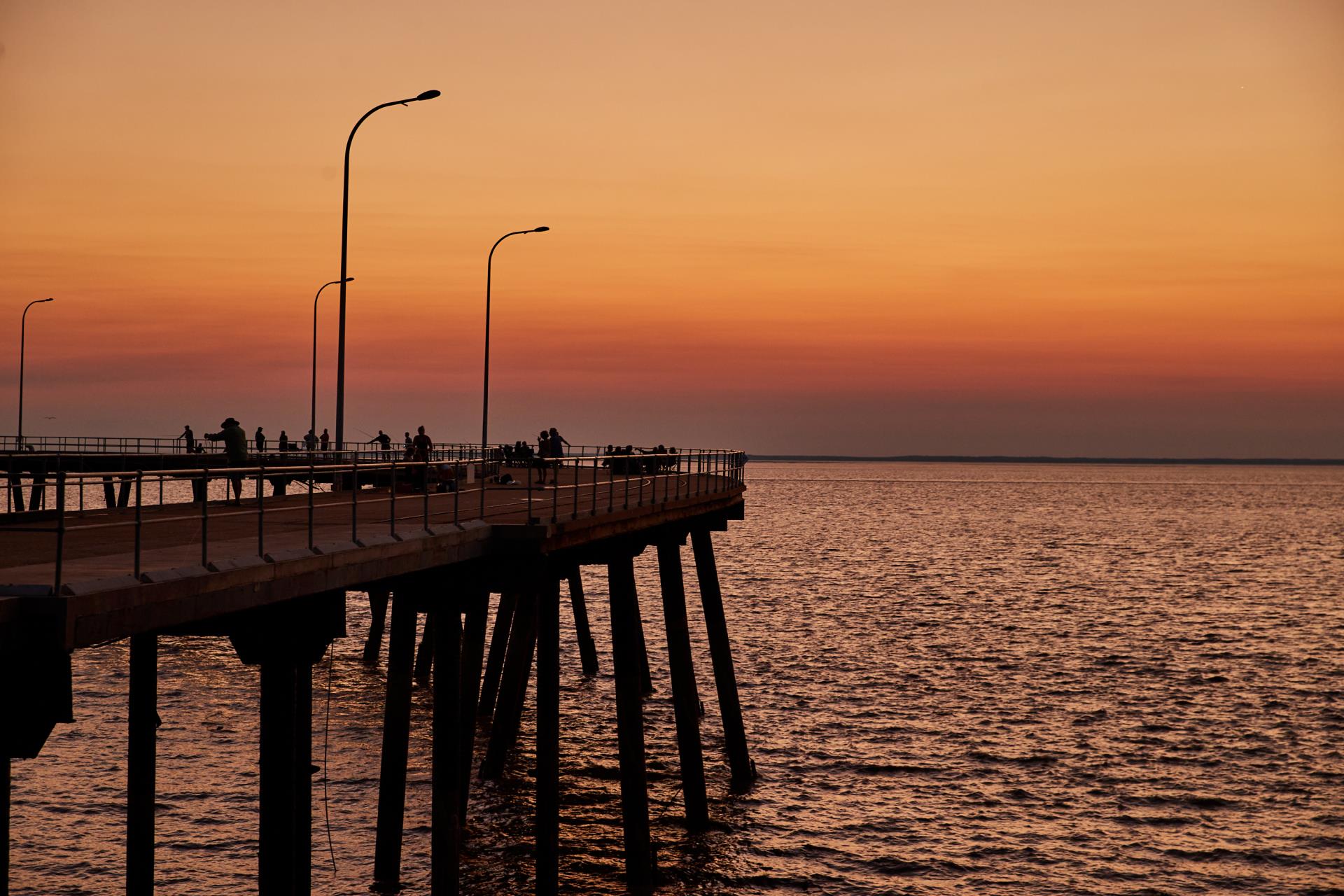
|
The Derby Wharf/Jetty
The first wharf, built in 1894, was a wooden T shaped structure located at the northern end of the present steel and concrete jetty. It was linked to the town of Derby by a horse drawn tramway, crossing the mud flats via a causeway where the present day road is located. Wool and pearl shell were the major exports in the early days. In 1964, when the new jetty was built, live cattle were exported and fuel, oil and provisions were the main imports. The last passenger ship visited in 1973 . The Jetty is a popular place from which to view the stunning sunsets over King Sound or to fish for silver cobbler, shark, golden grunter, north west salmon and mud crabs on the incoming tides. These tides are Australia’s highest and the second highest in the southern hemisphere.
|
|
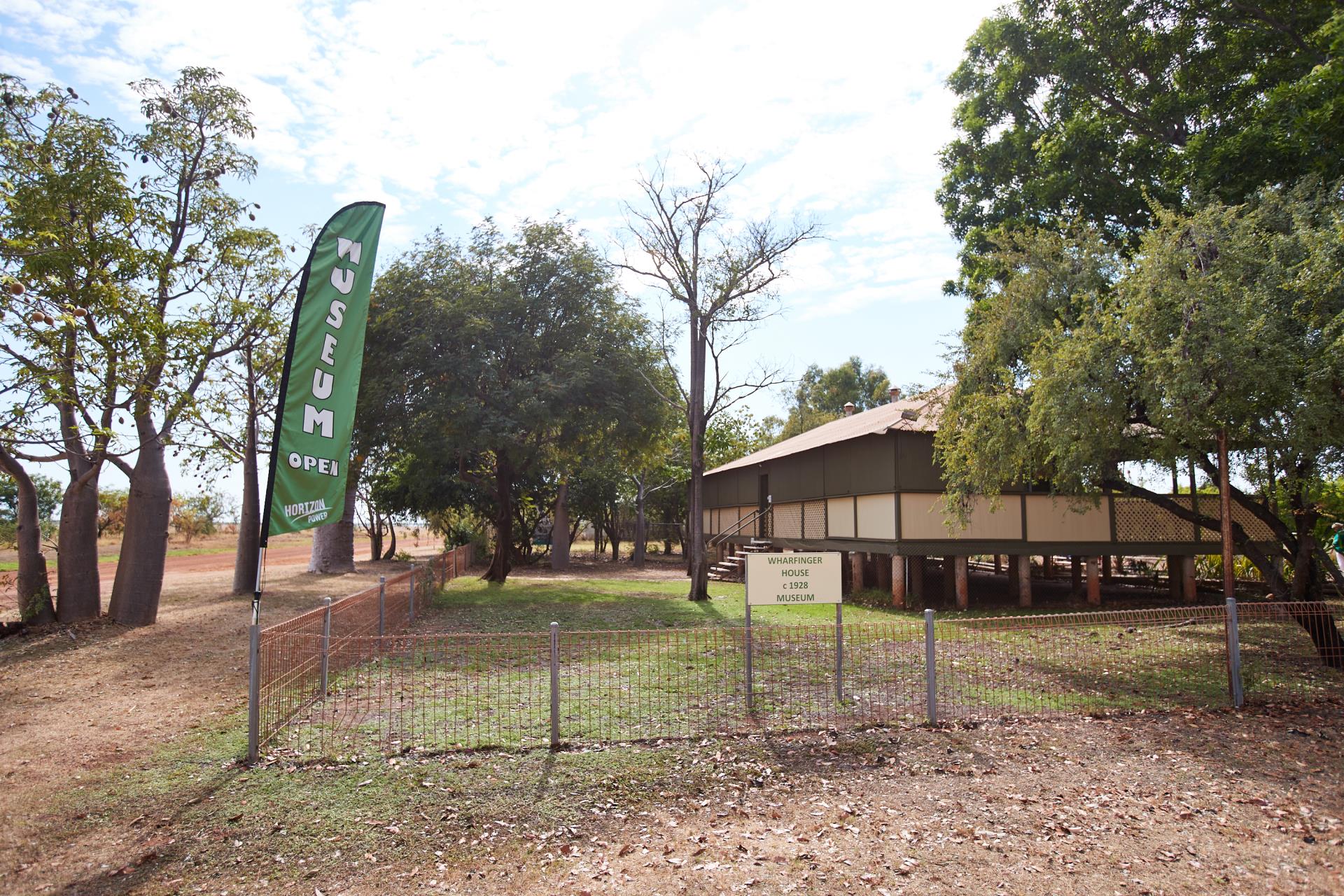
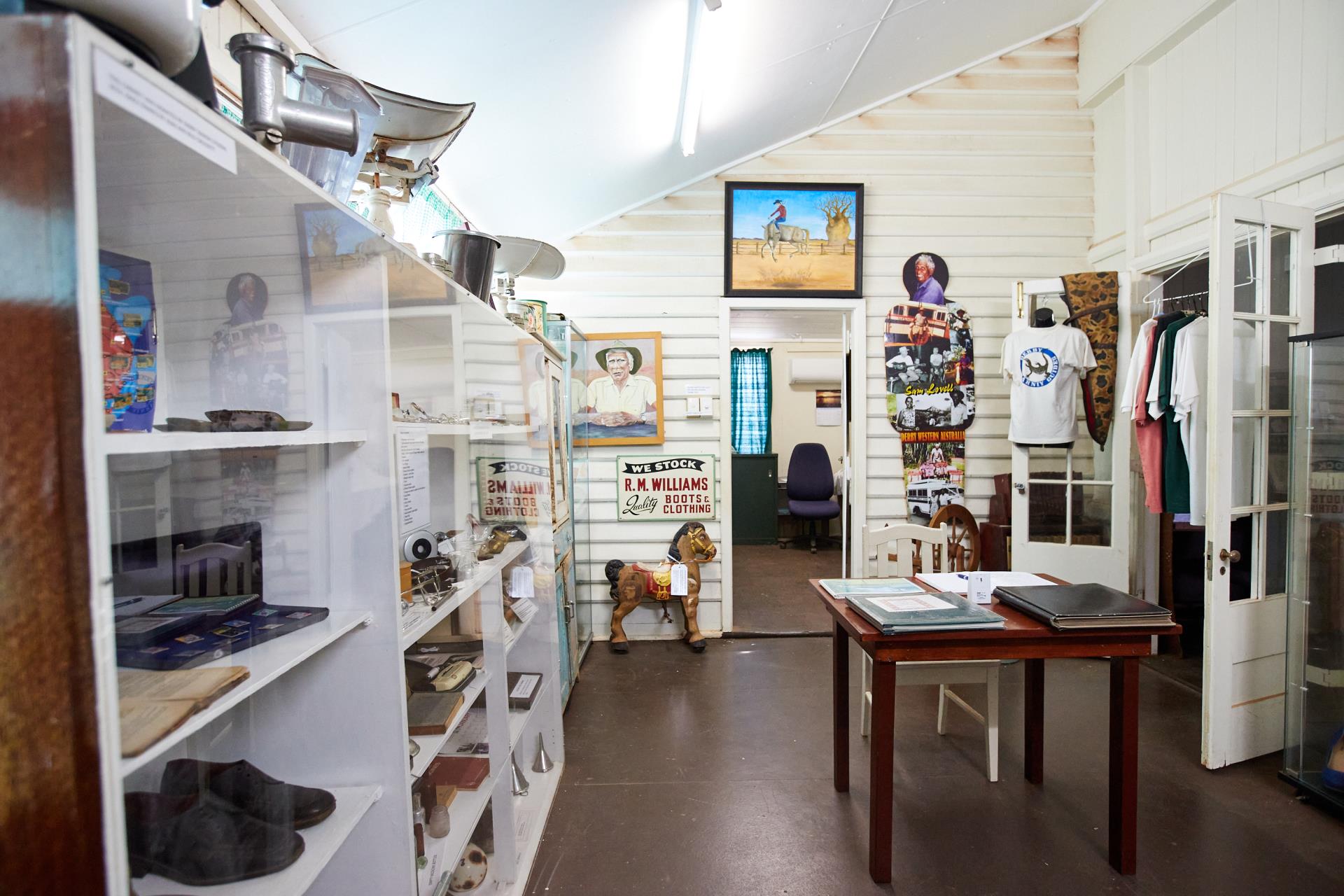
|
Wharfingers House Museum
Corner of Elder and Loch Streets. In the Dry Season it will be open Mo-Fr 10am-1pm. If you would like to request to view after openinghours please contact the Derby Visitor Centre.
The history of the Wharf and the demise of the steam ship, the SS Colac, continues in displays at this Museum devoted to the communications history of the town. Displays feature the shipping, telecommunications and aviation history of the area together with small displays on fossil mud lobsters and termites. The building is a fine example of the prefabricated wooden housing of the 1930s well adapted for living in a tropical climate without the benefits of air-conditioning. It was restored in 1988 as part of the Bi-Centennial Project. Opposite the Museum can be seen one of the oldest buildings in Derby. This is the old Wool Shed, for the export of goods prior to 1964. The import shed, where goods imported were stored for collection was demolished in 1998 to make way for a direct route to the wharf. The horse drawn tramway extended from the Jetty down Loch Street as far as the King Sound Hotel site. Nearby was a quarry that was used to supply stone for the causeway across the mud flats. The tramway finished near McGovern and Thompson’s Store, (now Woolworths). Those wishing to follow up on the story of the SS Colac can view the anchor and propeller of the vessel in the Lions Park in front of the Derby Civic Centre in Loch Street. The remains of the vessel can be viewed at low tide out from the end of the Derby airport runway via a fixed wing or helicopter flight. Access to the wreck is not possible from the land.
|
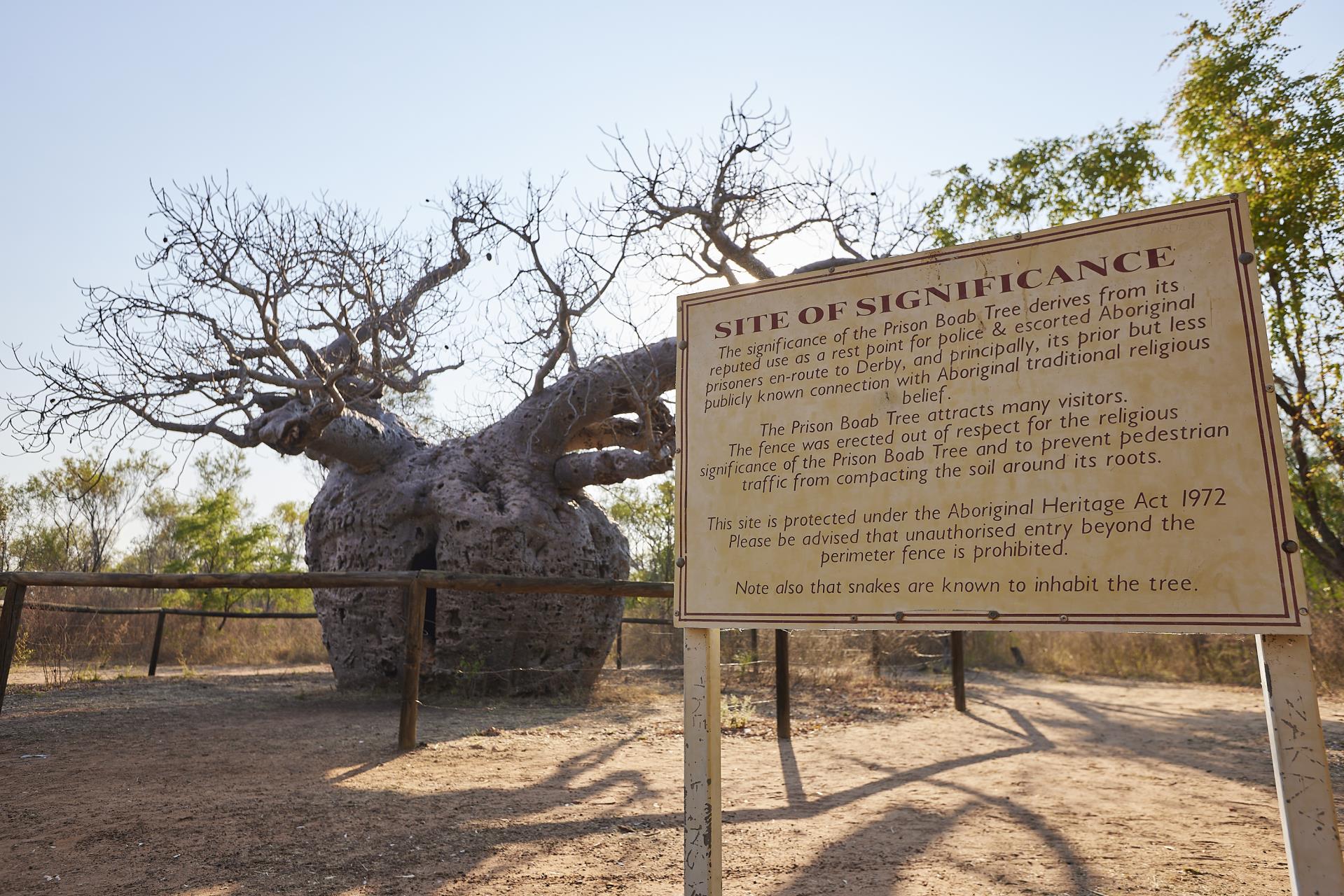
|
Boab Prison Tree
7km from Derby on the Derby – Broome Highway
This huge tree is believed to be around 1,500 years old and has a girth of 14.7 metres. It was used as staging point for prisoners being walked into Derby in the early days.
The Prison Tree is a registered Aboriginal Site. Visitors are requested to respect the cultural sensitivity of the site and not climb into or approach close to the tree. (See the Boab Prison Tree Interpretative Pavilion located on site for further information).
|
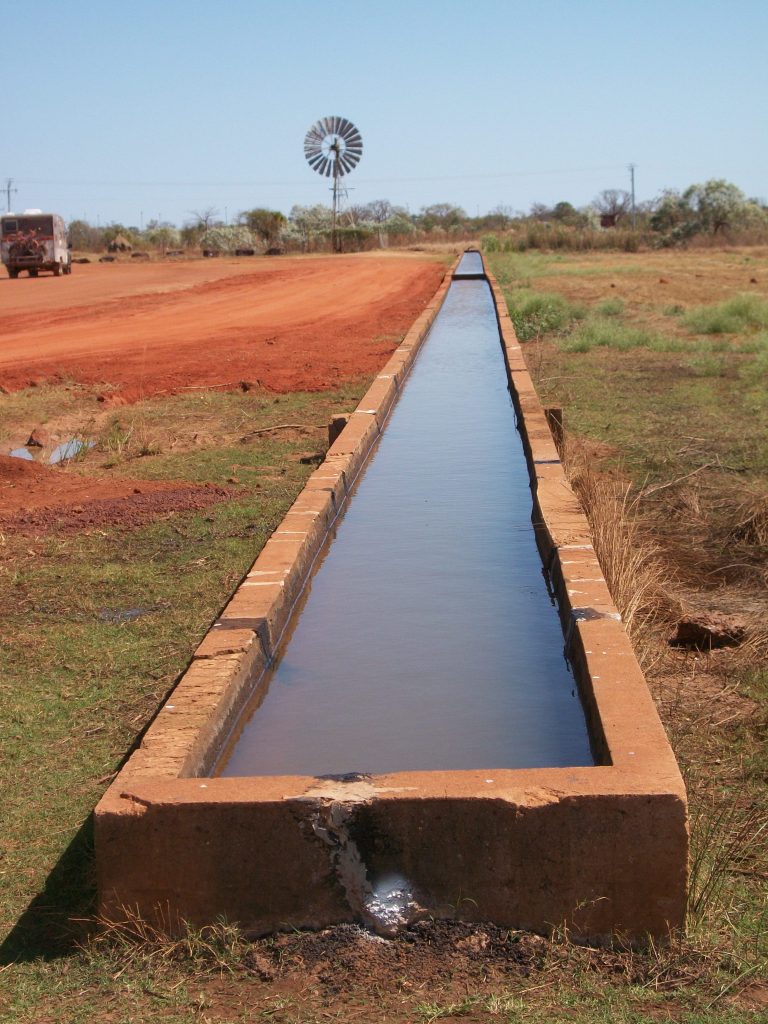
|
Myalls Bore and Cattle Trough
7km from Derby near the Prison Tree The first bore at this location was dug in 1910/11. It replaced the original well sunk by Alfred Duckworth Mayall in the early 1890s. The 1910/11 bore was 322 metres deep, had a residual head of 6 metres and cost 2700 pounds. When John Tait Blain was Secretary of the Road Board (1916/17) he had Joe Griffen build the concrete trough which is there to this day. This trough could handle 500 bullocks at one time and was later extended to a length of 120 metres. The flow from the bore was dropping off even by 1919. Now water is pumped into the trough by a windmill. The water from the bore has a rich mineral content and was reputed to have therapeutic properties. A bath house once stood near the trough. (See the Boab Prison Tree Interpretative Pavilion located on site for further information).
|
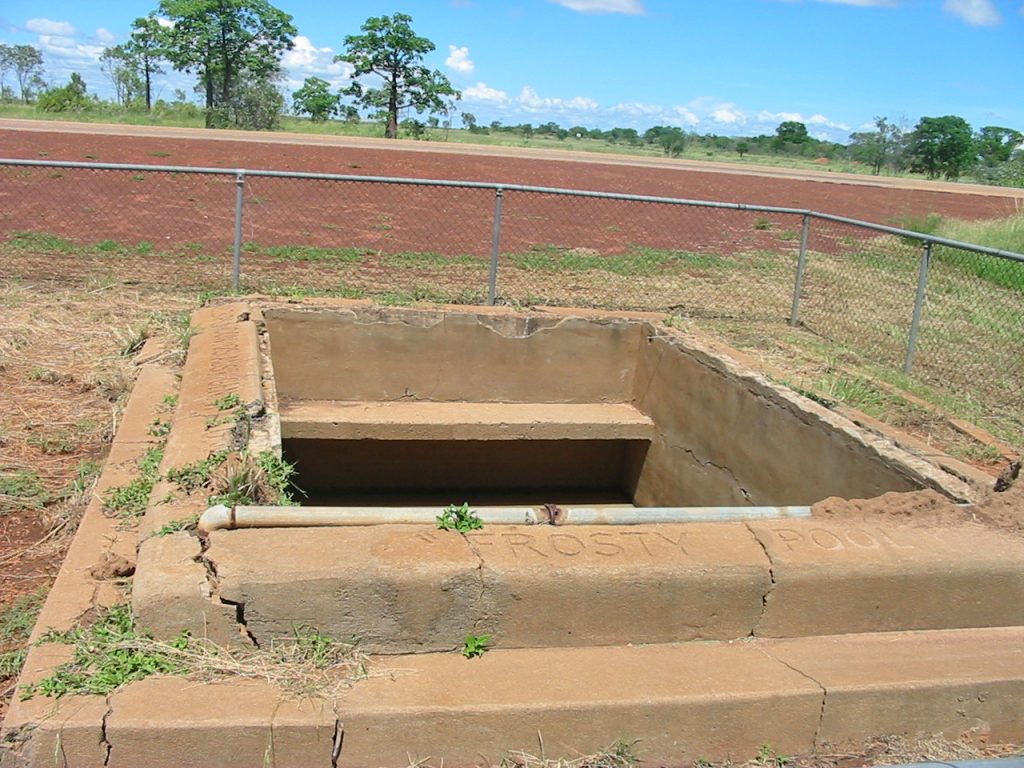
|
Frostys Pool
Adjacent to Myall’s BoreBuilt in 1944 as a bathing area for troops stationed in the area during the Second World War, this is one of the few remaining reminders of those years in the town. The bath was constructed by the 3rd General Transport Co. and was nicknamed Frosty’s Pool after a platoon member, Charles L.V. Frost.
|
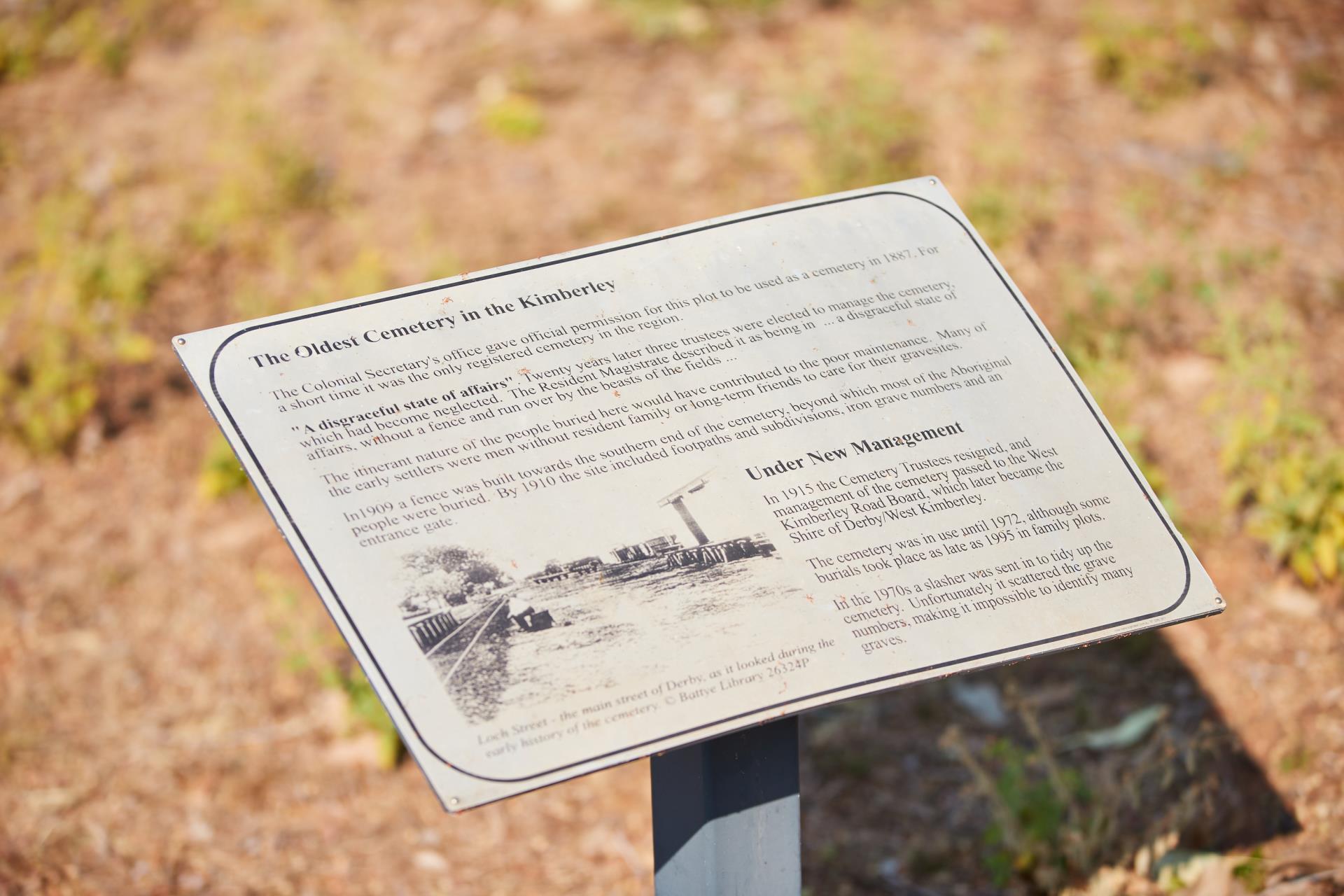
|
Derby Pioneer Cemetery
Lovegrove StreetThe cemetery and Old Gaol are sites on the Pigeon Heritage Trail which tells of the exploits of the Aboriginal Jandamarra. A booklet on the trail can be obtained from the Visitor Centre. At the cemetery one of Jandamarra’s victims, Police Constable William Richardson, is buried. Another interesting grave is that of the Aboriginal Police Tracker “Larry” Kunamarra who was honoured by the Queen for his services. Many graves in the cemetery are without headstones.
|
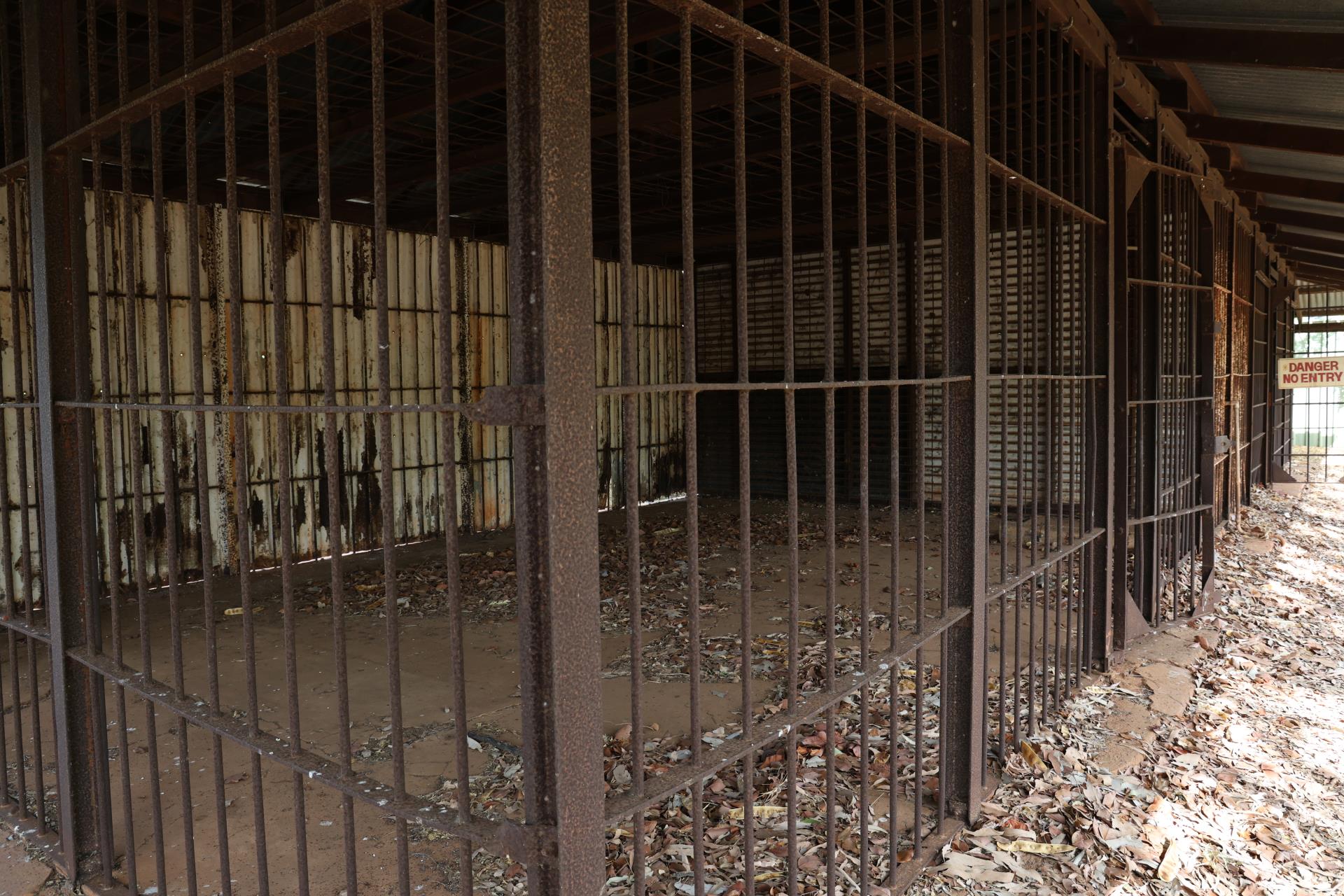
|
Old Derby Gaol
Loch Street – Registered National & State Heritage SiteThe Police Station and depot for the Police Horse Patrol was located in Loch Street halfway between the original Town of Derby (established near Numbala Ngunga) and Derby Port, locally known in the early days as “The Point”. The restored Old Derby Gaol is a tangible reminder of these times and is the oldest building in the town (1906). The significance of the Gaol to the Derby community is explained at the site.
|
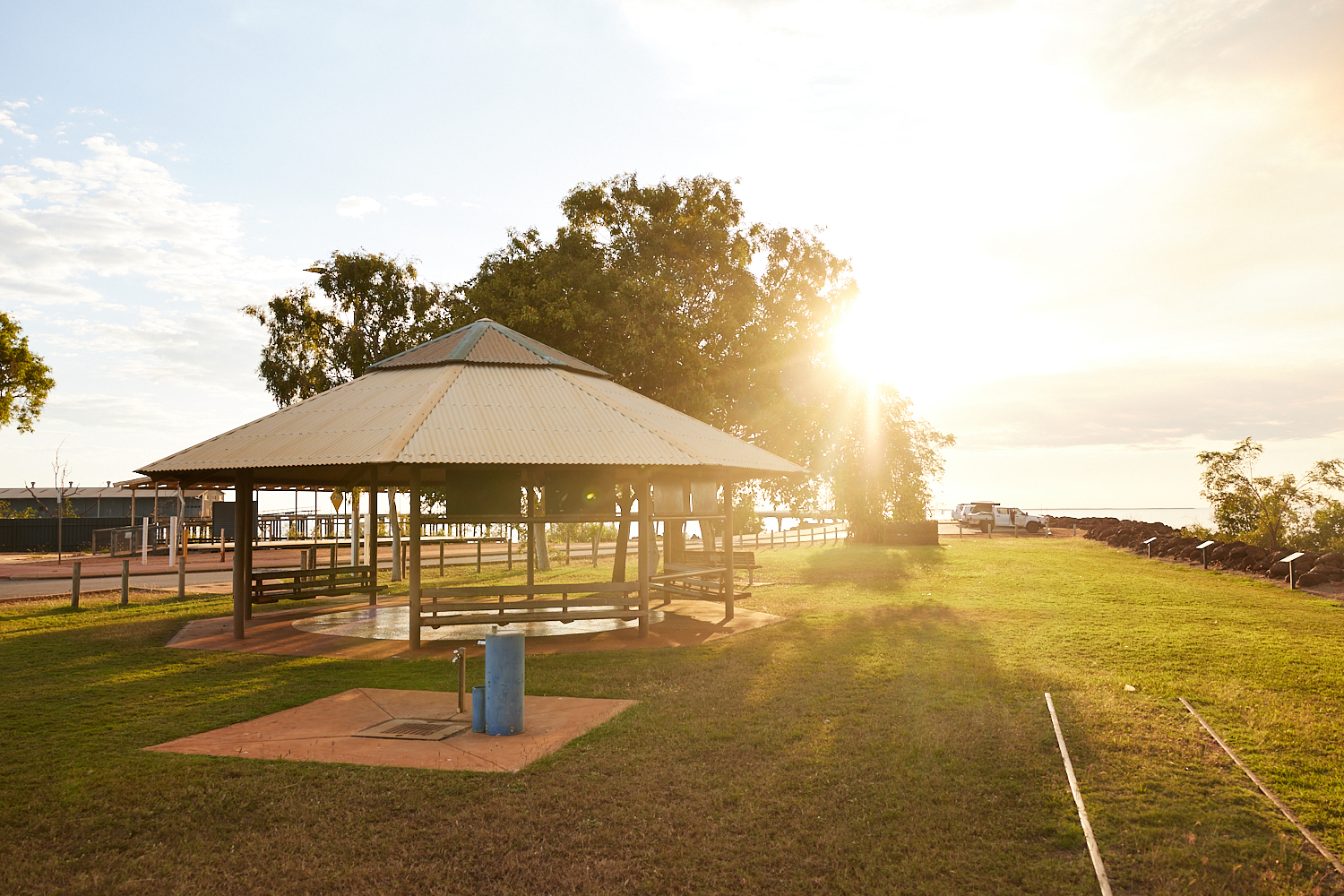
|
The Centenary Pavillion
Located at the jetty, this Pavilion tells of the geography and history of King Sound and the Port of Derby. The Pavilion features a colourful 28sqm mosaic tile floor depicting facets of life in the district.
|